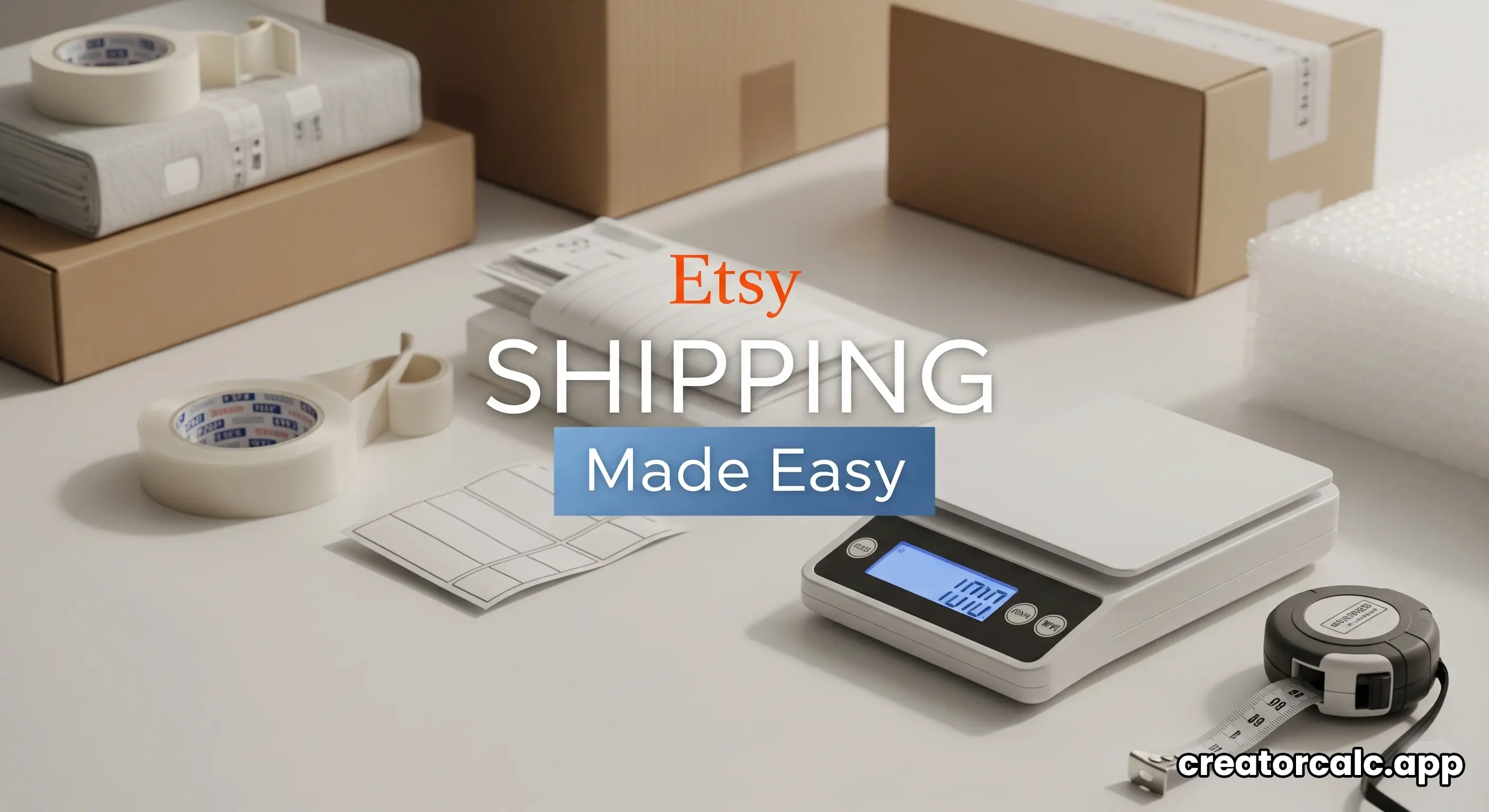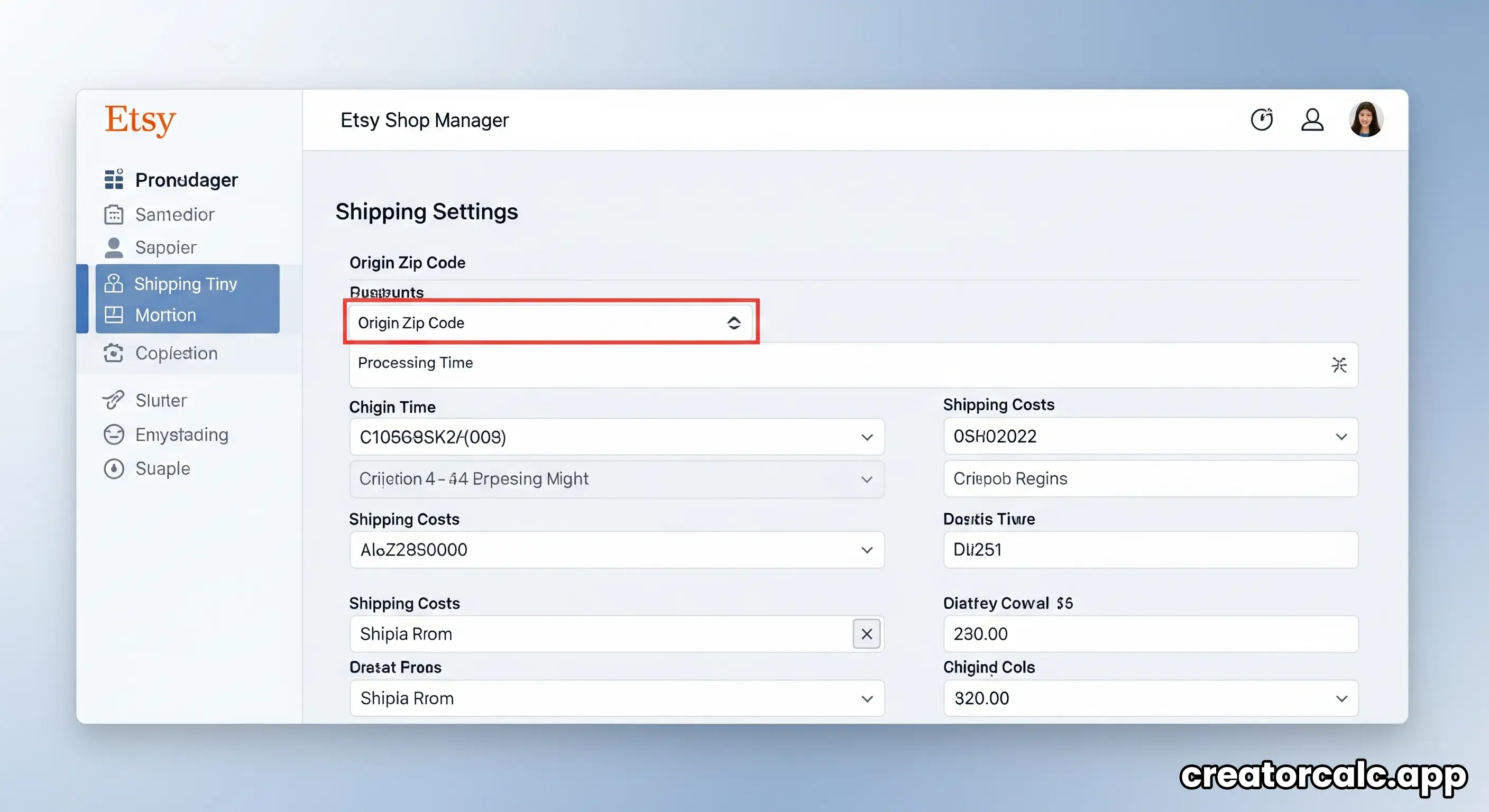For many Etsy sellers, shipping is the most confusing part of running their shop. How much should you charge? Which carrier should you use? What are shipping profiles? Incorrect Etsy shipping practices can lead to lost profits, unhappy customers, and a lot of stress. But it doesn't have to be this way.
This guide will make shipping simple. We will walk you through the entire process, step by step. You'll learn how to accurately calculate your costs, set up your shipping options correctly, and find ways to save money. Let's master Etsy shipping together.

Step 1: Accurately Weigh and Measure Your Package
Before you can calculate shipping costs, you need to know the size and weight of your package. This is the most important step. Do not guess!
What You Need
- A Kitchen Scale: A simple digital kitchen scale is perfect for weighing your items. Weigh the item *after* it has been fully packed in its box with all packaging materials.
- A Measuring Tape: Measure the length, width, and height of your final packed box.
Write these numbers down. The weight and dimensions of your package will directly determine the shipping cost.
Step 2: Decide on Your Shipping Price Strategy
How you charge for Etsy shipping can affect your sales. You have two main options.
A. Charge Exact Shipping Costs (Calculated Shipping)
You can use Etsy's calculated shipping feature. You enter your package's weight and dimensions. Etsy then shows the customer the exact shipping cost based on their location. This is fair and transparent, but sometimes a high shipping cost can scare customers away.
B. Offer Free or Flat-Rate Shipping
Customers love "Free Shipping". But shipping is never truly free. To offer it, you must include the average shipping cost in your product's price. For example, if your product is $20 and shipping is $5, you could price the product at $25 and offer free shipping.
Flat-Rate Shipping is a middle ground. You charge one fixed price for shipping, for example, "$5 shipping anywhere in the US". This is simple for the customer to understand.
Advertisement
Step 3: Understand Etsy Shipping Profiles
Shipping profiles are a huge time-saver. A shipping profile is a saved set of shipping settings. If you sell many items of similar size and weight, you can create one profile and apply it to all those listings.
How to Set Up a Shipping Profile
In your Etsy Shop Manager, go to 'Settings' > 'Shipping settings'. Here you can create new profiles. You will need to enter your origin zip code, processing time, where you'll ship, and the shipping costs (either fixed rates or settings for calculated shipping).
Using profiles means you don't have to enter the same shipping information over and over again.

Step 4: Don't Forget Packaging Costs
Your shipping cost is not just the postage. It also includes the cost of your packaging materials.
Total Shipping Cost = Postage Cost + Packaging Material Cost
Your packaging materials include boxes, mailers, bubble wrap, tape, labels, and any branding materials like thank you cards or stickers. These small costs add up. Factor them into your product price or your shipping charge to protect your profit, as explained in our pricing guide.
Frequently Asked Questions (FAQs)
1. What is "processing time"?
Processing time is the time you need to get an order ready to ship. It is NOT the delivery time. Be realistic. If you need 3 days to make and pack an item, set your processing time to 3 business days.
2. Should I offer international shipping?
Shipping internationally can open up a huge new market. However, it is more complex and expensive. You will need to handle customs forms and be aware of much higher costs. Start with domestic shipping. Once you are comfortable, you can explore shipping to other countries.
3. How do I handle returns?
You must have a clear policy for returns written in your shop policies. Generally, you decide if the buyer pays for return shipping. For damaged items, sellers often cover the cost. A clear policy prevents disputes with customers.
4. Should I buy shipping insurance?
Yes, and it's a good idea for expensive items. Most carriers offer insurance for an additional fee. This protects you if the package is lost or damaged during transit. For US sellers, Etsy Shipping Labels often offer an easy way to add insurance.